Haben: The Deafblind Woman Who Conquered Harvard Law by Haben Girma and Manga Claus: The Blade of Kringle written by Nathaniel Marunas, illustrated by Erik Craddock
One of the 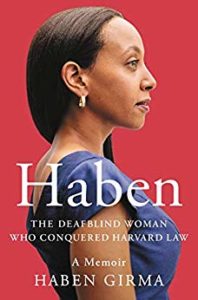 t
t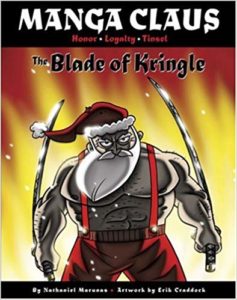 hings I like best about the holiday season are the stolen moments of quiet amidst the hustle and bustle–lovely, little gifts of reading or listening time when least expected, so I try to have a book of some sort at hand. Since Thanksgiving weekend, I’ve already managed to squeeze in some titles that were on my hold list. Here are two quick (and vastly different) reads I’ve recently enjoyed and am excited to share with you.
hings I like best about the holiday season are the stolen moments of quiet amidst the hustle and bustle–lovely, little gifts of reading or listening time when least expected, so I try to have a book of some sort at hand. Since Thanksgiving weekend, I’ve already managed to squeeze in some titles that were on my hold list. Here are two quick (and vastly different) reads I’ve recently enjoyed and am excited to share with you.
I anxiously awaited Haben Girma’s autobiography after watching a segment on C-SPAN2’s Book TV this fall. Her interview with host Peter Slen was engaging and entertaining, pulling me in with fascinating stories sprinkled with her great sense of humor. Her book, Haben: The Deafblind Woman Who Conquered Harvard Law, did not disappoint.
Girma, whose parents immigrated to the U.S. from Eritrea and Ethiopia, grew up in Oakland, California. She is a graduate of Harvard Law School who currently advocates for people with disabilities. She is an avid ballroom dancer, has climbed icebergs, helped build a school in Mali, surfs and kayaks, has traveled extensively, has pioneered an accessible communication system, and has spoken at the White House. She also happens to be deafblind.
Haben (pronounced “ ‘Ha’ like ‘ha-ha’ and ‘ben’ like ‘Benjamin’ ”) is full of adventures and insights. Girma, in her early thirties, describes her journey navigating cultures–American and Eritrean and Ethiopian, inclusionary and exclusionary–with warmth, passion, and wit. Her voice clearly comes through with confidence and delight.
Biographies are one of my favorite genres because I get to experience the world from different perspectives, meeting interesting people on the page even if I never have the opportunity in person. Nowhere near the end of her story, Haben Girma already has plenty of insight to offer. In addition to her travels and accomplishments, she shows what it takes to maneuver in a world designed for others, to carve out a space for daily life. She leads by example and by thoughtful suggestions, inviting all of us to consider ways to open accessibility for people with disabilities.
Charming and astute, Haben Girma’s autobiography is an enjoyable read and a valuable one. I can’t wait to find out the rest of her story.
What happens when you combine a disgruntled elf, hordes of teddy bears fueled by evil magic, and an author’s obsession with samurai movies? You get, Manga Claus: The Blade of Kringle, written by Nathaniel Marunas and illustrated by Erik Craddock. Yes, Virginia, there is a Manga Claus. He exists as certainly as honor and loyalty and tinsel. He wields a pair of skillfully forged samurai blades, defending Christmas from threats internal and external and coming to the rescue as surely as he delivers toys every year.
Fritz the elf resents being assigned to the laundry instead of Santa’s workshop. In a fit of rage with his fist raised to the sky, (“I’ll show him what I can do–I’ll show them all!!!”) Fritz uses an evil spirit to animate a nutcracker in a plot to sideline the workshop. One thing leads to another, and the evil escapes to create an army of ninja teddy bears bent on destruction. Thanks to his katana and his wakizashi, Santa transforms into Manga Claus and saves the day.
The charmingly cheesy text pairs fantastically with Erik Craddock’s action-packed, blockish-yet-expressive art in shades of red, grey, and black. (I got a distinct classic Cartoon Network vibe from it.) This slim graphic novel moves quickly yet unveils additional visual details with every read. It begs to be made into an animated short! It’s a delightful, campy romp that is not designed for people who take Santa seriously. This is a great title for teens as well as graphic novel fans and folks whose favorite Christmas movies are action flicks.
I can’t wait for the other books on my hold list to come in. Who knows what treasures will appear before the year is out! If you would like to see what titles the library offers or to place an item on reserve, take a look at our website //www.joplinpubliclibrary.org/ and click on “Search Catalog”. Library staff are available to help whether you stop by or give us a call at 417-623-7953. Happy reading!

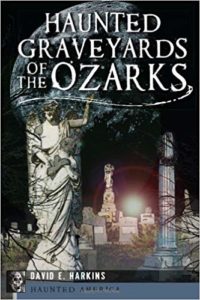
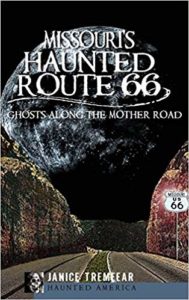
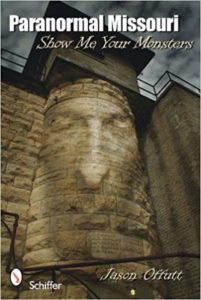 Haunted Graveyards of the Ozarks by David E. Harkins
Haunted Graveyards of the Ozarks by David E. Harkins